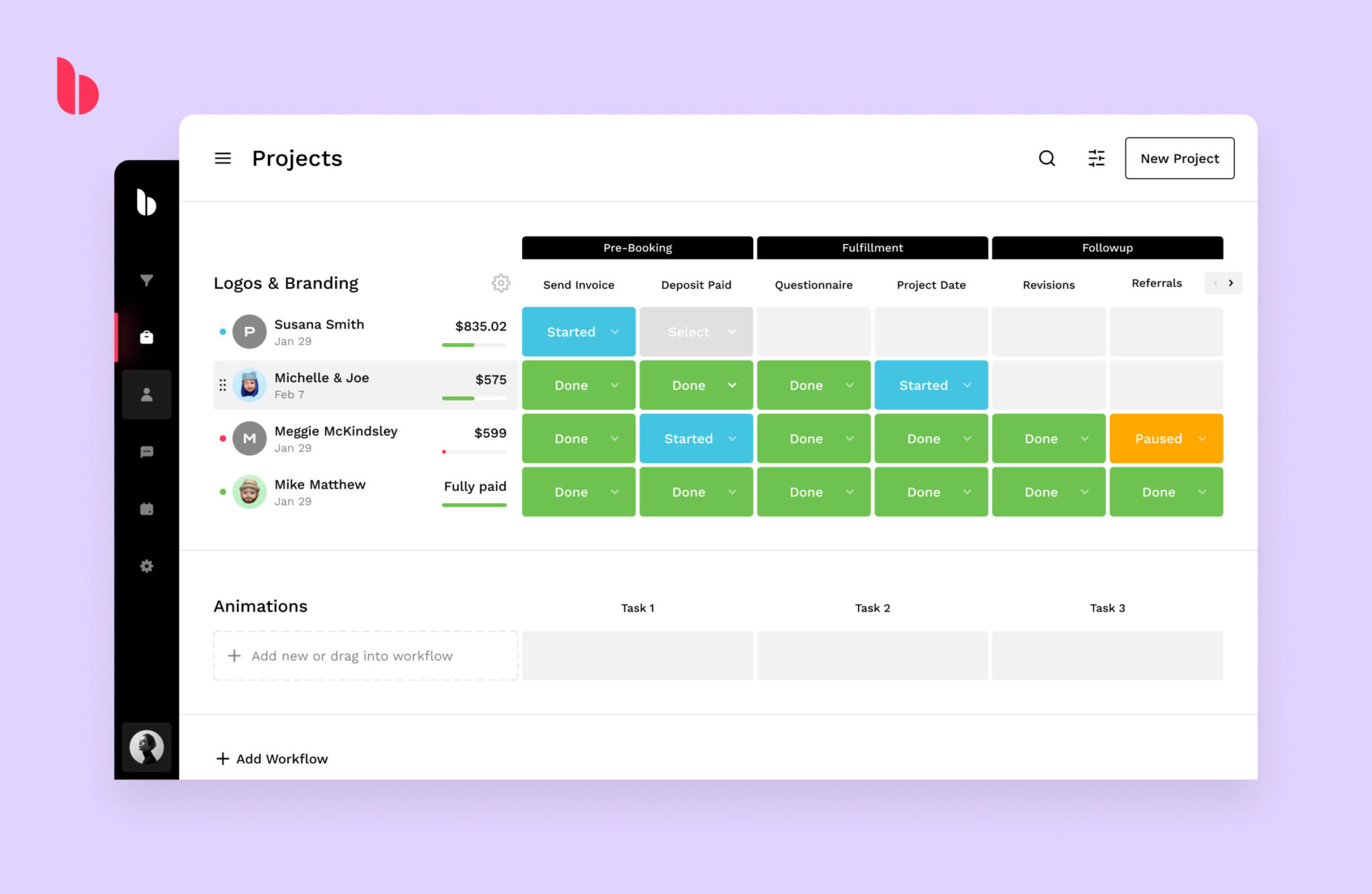As anyone in business would agree, client management is crucial to not only your productivity but also the success of your business. So when did this become so important?
The 20th century represents a turning point in the history of how people and companies conducted business. With the advertising boom in the 1920s, the conventional way of selling products and services changed forever.
The trend of consumerism arrived and the sheer quantity of products grew immensely. People could choose between many brands, and quality wasn’t the main issue anymore.
This is when companies realized that they needed to improve their customer service, and thus the seed of client management was planted.
This new attitude was neatly summarized by the phrase “the customer is always right”.
Client-based commerce has persisted well into the 21st century. The invention of the internet and other digital technologies has accelerated its expansion even further.
Today, businesses compete with each other not in terms of who has the best product, but in terms of who can serve their customers better.
The race to provide the best possible client experience has driven industry experts to codify the most effective ideas and practices into a discipline called client management.
Thanks to client management, businesses can spend less time figuring out what works and what doesn’t, and more on actually serving their clients.
Client management is the key to business success. And to help you improve your client service efforts with client management, we have tried to encapsulate everything you need to know into an easily-digestible guide.

What is client management?
The basic definition of client management is that it is a technique for managing interactions with clients. Simple and straightforward, but it doesn’t tell us much about how client management works in practice, nor what are its key benefits.
Let’s start with the notion of interaction from the aforementioned definition. In the context of client management, interaction refers to any kind of communication between you and your clients. This can include phone calls, email, live chat, or meetings in person (we’ll have more to say on the topic in the next paragraph).

Next, we need to clear up what it means to manage these interactions. To put it simply, it means that you should create and implement a strategy for interacting with clients.
Client management is a proactive activity. You are not supposed to sit around waiting for clients to call, only to give them an answer you came up with on the spot.
There is some debate about who is supposed to handle client management within a company. Some argue that it is the job of a project manager, as the most knowledgeable person for a given project. Others claim that salespeople are better suited for this role since they’re used to communicating with clients directly.
Finally, there are those that believe that client management is a full-time job, which means that companies are better off hiring a dedicated client manager.
In more practical terms, client management can help you improve your business operation in a variety of ways. Some of the benefits include:
- Improved communication with clients
- Shorter conversion cycles
- Lower customer acquisition costs
- Greater client lifetime value (CLV)
- Increased cross-selling and up-selling potential
- Longer lasting relationships
- Client acquisition through referrals
- Improved brand authority online
To summarize, client management is the strategy and practice of developing your interactions with clients to achieve better business outcomes.
How communication plays into client management
Communication lies at the heart of client management. In contrast to other client-focused business practices, client management relies on direct, transparent, goal-oriented communication with existing clients, as well as leads qualified to become clients. Communication in client management embodies the following characteristics:
Managing expectations
Managing client expectations is an integral part of client management. You want your clients to know what they can expect from you at all times. Being explicit is key here.

If you hype up your services too much, and then fail to deliver to the extent promised, clients will immediately start questioning your competence. In this sense it is better to promise less and deliver consistently. Another thing you should get in the habit of doing is offering concrete figures.
Be clear about what clients can expect in terms of KPIs (key performance indicators). For instance, if you are doing a website redesign to improve traffic, give your estimate of what that improvement will look like percentage-wise.
Additionally, having a client onboarding process in place can help this step tremendously.
Building trust
Another important aspect of communication in client management is trust. You want to establish yourself as someone the client can trust with their problem. However, you can’t build trust with words alone, nor can you do it overnight.
First, you should establish yourself as a credible source of information. Showcase your industry knowledge, and explain how this makes you competent to deal with the client’s problem. Second, explain what you plan on doing to help the client, and give them some proof that you mean business.
If you said in your introduction that you will provide an estimate in a week, make sure you do so. Building trust is all about making realistic promises, and delivering on them.
Determining your clients’ needs
Communication is as much about talking, as it is about listening. If you want to pursue a long-term relationship with a client, you need to be clear on what exactly they need from you. This is easier said than done.
Clients are not always explicit about what they need, even when they think they’re telling you everything. To use the previous example, they might think they’re not getting enough website visitors due to the site’s design, but the issue might lie with content instead, something they haven’t thought about.

Finding out what your clients really need is all about asking the right questions. So, ask them directly what they think the problem is, what should be done about it, and what kind of results do they expect.
6 Tips to help you manage your clients
Now that we’ve covered the basics of client management, it is time to get into details. Client management is as much about strategy as it is about practice. The best way to get some practice under your belt is to start implementing client management right away. So here are some ideas on how to get started.
1. Give regular progress updates
Once you start working with a client, they will want regular updates on the status of their project. Some clients can go a little overboard with their demands, but for the most part all you have to do is provide assurance that you’re working on the project.
It is usually enough to email a progress report after each meaningful milestone. For example, if you’re designing a website, you can send a report after finishing a web page. Your clients will rest easy knowing that their project is coming along nicely, making them easier to manage overall.
2. Be transparent
Being transparent in your correspondence with clients is essential for effective client management. If a client starts thinking that you’re not telling them the whole story, they will grow suspicious even if there is no foul play on your part.
Therefore, you should always strive to talk openly, and rely on facts to back your claims. For instance, if you feel that you know of a better way to accomplish something than the one your client suggested, be forward about it and tell them directly.
Even if they don’t think you’re right, they will appreciate your honesty, earning you more goodwill down the line.
3. Start the conversation
If you always rely on the client to start the conversation, you will never develop your relationship beyond its initial form. What you should do instead is take a more proactive stance, and start talking to clients even if there is no explicit need to do so.
For instance, if you end up finishing a part of the project ahead of time, don’t hesitate to tell your client the good news. By showing your willingness to talk, you will make your clients feel less apprehensive about coming forward with their suggestions, criticisms, and opinions.
4. Provide engagement
Don’t limit your interaction with clients to just exchanging reports. There are other forms of communication you can partake in, each with its own unique benefits. For instance, you can ask clients questions about their industry, to get a better sense of the world they’re operating in.
Or you can send them an ebook to teach them how to use your services effectively. Whichever form of communication you choose, the point is to generate engagement. By keeping your clients engaged, you will create a foundation for a long-lasting relationship.
5. Know how to handle setbacks
No business is immune to setbacks, no matter how hard you try to keep everything under control. And when things do go wrong, projects get delayed, and clients will start asking questions. Some businesses react to this by keeping quiet until the thing blows over.
But keeping your clients in the dark is not a good way to foster a long-term relationship. You should always come forward and admit to the client that there has been an issue and that you’re doing everything in your power to address it.
6. Use the right tools
Client management is not a single process, but a collection of many interrelated activities. These are mostly digital activities, which means they can be performed more effectively with the help of the right kind of software.
You can use a different app for each separate process like sending out emails or writing reports, or you can use a one-in-all CRM solution. A simple CRM system will help you keep your clients organized in a database, use email automation, communicate with team members, and in general make your life a lot easier.
We will have more to say about client management tools in the next section.
Top 6 client management tools to make your life easier
Software tools are invaluable for any digital enterprise, including client management. Here is a selection of our favorite ones. Try them out, and take your client management efforts to the next level.
1. Moxie
CRM helps companies to build a relationship with their customers that, in turn, creates loyalty and customer retention. This strategy results in more profit for a business because both aspects of loyalty and revenue are critical for your success as a business, driving growth and repeat business.
Hectic’s complete client management system allows you to keep all of your customer information handy so that you can be a professional in every sense of the word. From organizing your project deadlines and deliverables to proposals and invoices to ensuring real-time updates and collaboration between you and your clients, and monitoring and calculating your clients’ health (cue calculating lifetime earnings, checking past notes, referencing your contracts, monitoring time tracked, etc), Hectic has your back every step of the way.
2. PipelineDeals
PipelineDeals is an effective client management solution that rose to prominence in recent years. PipelineDeals is simple to use, while offering enough functionality to satisfy even the most demanding users.
Companies use PipelineDeals to consolidate client data, track marketing campaigns, automate tasks, and communicate with team members.
PipelineDeals can be integrated with other business apps such as Zapier, Microsoft Outlook, MailChimp, and others. You can try out the app for free, and there are multiple subscription tiers to suit any budget.
3. Insightly
Insightly is another popular client management tool, with more than 0.5 million users across the globe. Insightly is mainly geared toward small businesses, but it packs enough features to satisfy enterprise-level users.
The app provides a variety of functions, including sales pipeline automation, contact management, task scheduling, and more. If you want to keep track of your client interactions, enhance communication, or improve your overall productivity, Insightly is the tool to use.
4. ReallySimpleSystems
Really Simple CRM is a powerful free tool for developing long-lasting relationships with your clients. It exists to help you work smarter, not harder. Really Simple CRM gives you the features you need to attract, convert, and service clients.
Features include marketing automation, task management, scheduling, and client segmentation. The part about Really Simple CRM is the price. You can use the basic version of the app for free indefinitely, or you can upgrade at any time to get extra features.
5. SalesforceIQ
SalesforceIQ is a feature-rich application that exists to make your clients happy and satisfied. Its main feature is the Relationship Intelligence technology, which automatically detects significant client behavior, sorts it according to patterns, and then predicts the most likely outcomes.
SalesforceIQ is built with integration in mind, so you can easily connect it to other client management tools. The built-in reporting function also makes it easy to keep track of your progress, so you can continually optimize your client management efforts.
6. Nimble
Nimble is a client management app focused on multi-channel communication. Once you connect the app with your client database, it will aggregate all contact information into a single view, making it easy to reach out to clients via their preferred channel of communication.
The app supports accounts from all major social media services, including Facebook, Instagram, LinkedIn, Twitter, and others. With Nimble, you will never miss out on a client due to issues with communication.
7. Bloom
Bloom is a unique all-in-one tool that stands out from other CRM software due to its modern design, customizations, affordable price, and versatility. This tool provides small business owners with powerful features for managing and growing their businesses. Bloom puts everything you need to manage your creative business in one place.
Conclusion
Client management is a relatively new business discipline, but one that shows a lot of promise already. Its purpose is to streamline interactions between businesses and clients through a variety of tactics, some of which we have outlined above.
And once you get the hang of it, client management is guaranteed to help your business grow.
Keep the conversation going...
Over 10,000 of us are having daily conversations over in our free Facebook group and we'd love to see you there. Join us!








